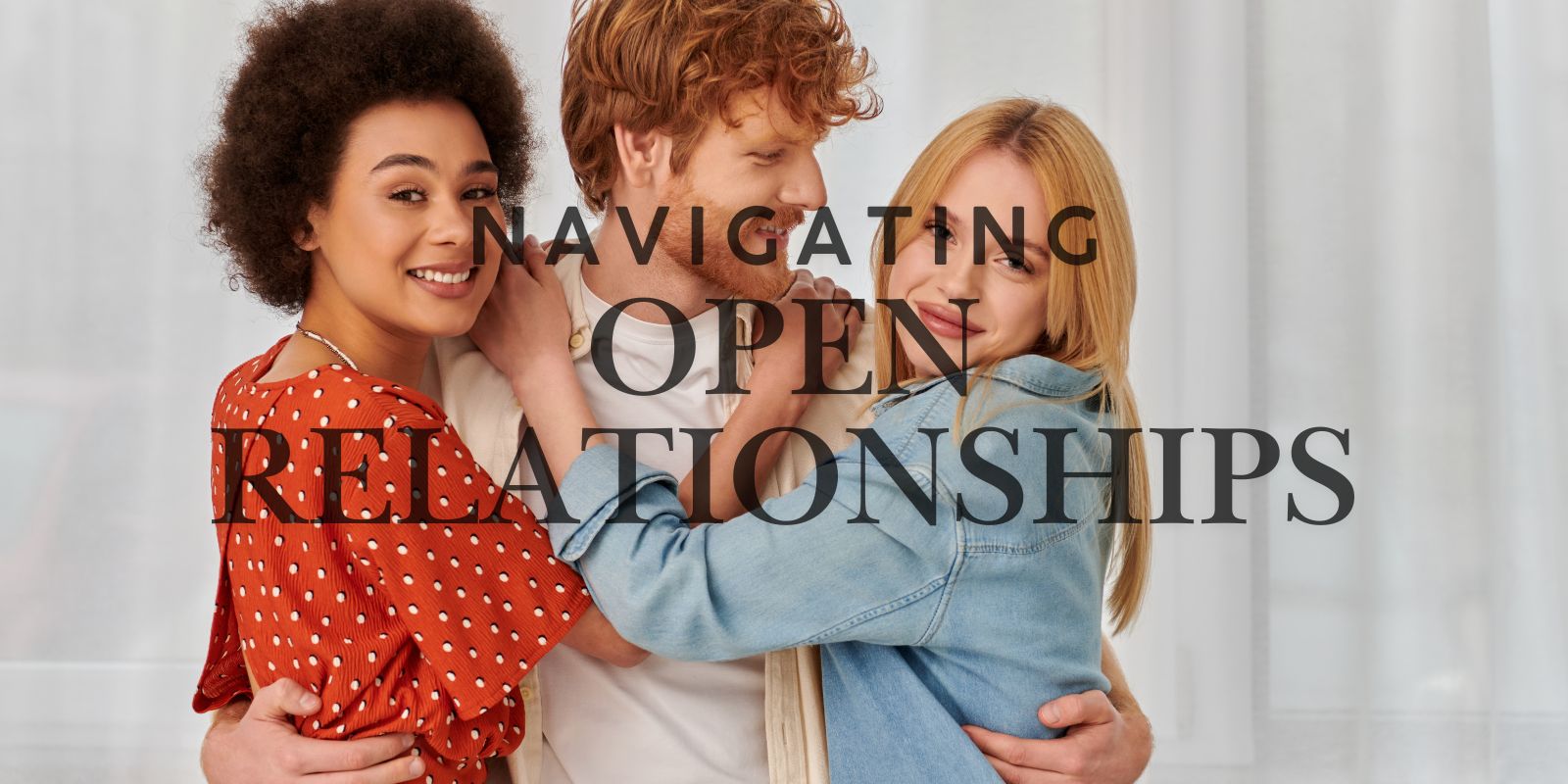Navigating Open Relationships: Honest Insights Into Love, Sex, and Trust
Navigating open relationships means balancing desire with honesty. With clear rules, trust, and respect, they can offer freedom without losing commitment.
Open relationships are no longer hidden on the margins — more couples are exploring them as a real option for intimacy. As a male escort who has seen how love and sex intersect in complex ways, I know these relationships can thrive when handled with honesty. This guide breaks down why people choose them, the challenges that arise, and the rules that make them work.
Table of Contents – Navigating Open Relationships
- What Does Navigating Open Relationships Mean?
- Why People Choose Open Relationships
- Building Boundaries and Rules
- Emotional Challenges and Jealousy
- Communication and Trust
- Exploring Intimacy and Desire
- Common Pitfalls to Avoid
- Is an Open Relationship Right for You?
- Key Takeaways
- FAQ
What Does Navigating Open Relationships Mean?
Navigating open relationships is about managing intimacy with more than one partner in an honest and respectful way. Unlike casual cheating or hidden affairs, these agreements are built on consent and transparency. Both partners acknowledge that sexual or romantic connections outside the relationship can happen, and they put boundaries in place to protect trust. This is often called ethical non-monogamy, and it is becoming a recognised alternative to the traditional model of lifelong monogamy.
There are many different ways to structure an open relationship. Some couples only allow sexual encounters with others, while others explore ongoing emotional bonds as well. What matters most is that both partners are comfortable with the arrangement and feel safe voicing their limits. As Attachment Project explains, open relationships work best when people are clear about their emotional needs, their expectations, and the rules that will keep their bond intact.
For couples who choose this path, navigating open relationships requires ongoing communication. It is not about replacing a partner but expanding how intimacy is experienced. Done well, it can deepen trust and honesty because both people must face difficult conversations head-on. It also gives room for sexual variety, exploration, and the freedom to acknowledge attraction to others without guilt. At its heart, it is less about sex itself and more about building a relationship model that fits real human desires.
Why People Choose Open Relationships
Couples step into open relationships for many reasons, and it’s rarely as simple as just wanting more sex. For some, the appeal lies in exploring new experiences without ending a partnership they value. Sexual variety can be exciting, but so too can the freedom to connect emotionally with others. These choices don’t always come from dissatisfaction; often, they come from a desire to expand intimacy rather than limit it.
Travel and lifestyle changes also play a role. A vacation fling can open people’s eyes to how attraction works outside of their primary relationship. Instead of treating these encounters as threats, some couples agree that it’s healthier to acknowledge them openly. By choosing honesty over secrecy, they reduce guilt and strengthen their core bond.
Others see open relationships as a way to balance independence with commitment. In long-term partnerships, personal growth can sometimes feel restricted. Allowing space for outside connections can keep the relationship dynamic and reduce resentment. At the same time, partners often report that these arrangements bring them closer, since they must rely on trust and open communication to make them work. In short, people choose open relationships not to avoid love, but to build a version of love that feels more authentic to them.
Building Boundaries and Rules
Open relationships succeed or fail on the strength of their boundaries. Without clear agreements, it’s easy for feelings to get hurt or trust to break down. Setting rules doesn’t mean restricting freedom — it means creating a framework where both partners feel safe. These rules can cover everything from who you see, to how often, to what details are shared afterwards. The goal is not control, but mutual respect.
As Refinery29 points out, rules vary from couple to couple. Some want detailed agreements, while others prefer flexibility. What matters most is that the rules reflect what both partners need to feel secure. Boundaries should never be one-sided or used as a way to control the other person; they should always be negotiated fairly and revisited regularly as the relationship evolves.
Common rules in open relationships might include:
- Always use protection with outside partners.
- Share new encounters honestly, without hiding details.
- Agree on whether emotional connections are allowed or only sexual ones.
- Limit how often or where outside encounters can take place.
- Prioritise time together before making plans with others.
Clear rules don’t remove all challenges, but they give couples a shared map to follow. By agreeing on boundaries in advance, partners show respect for each other’s comfort levels, while still leaving space for freedom and exploration.
Emotional Challenges and Jealousy
Even with clear rules, emotions can complicate open relationships. Jealousy, insecurity, and fear of being replaced are common reactions when partners begin seeing others. These feelings don’t mean the relationship is failing — they mean you’re human. The key is to acknowledge them openly rather than bury them. Couples who thrive don’t pretend jealousy doesn’t exist; instead, they talk about it and look for solutions together. Resources like coping with infidelity can also provide useful strategies for handling trust and vulnerability.
Sometimes jealousy fades as partners build confidence, and sometimes it sparks deeper conversations about needs. Working through these feelings can actually strengthen the bond, showing both people that honesty and reassurance are more powerful than fear. With patience and openness, jealousy becomes less of a threat and more of a chance to grow closer.
Communication and Trust
No open relationship can survive without strong communication. This isn’t about checking in once and then assuming everything is fine — it’s about ongoing honesty. Couples need to share not just what happened, but how it made them feel, and whether any boundaries need to be adjusted. Regular conversations keep trust alive and stop resentment from building in silence.
Trust also depends on keeping promises. If you’ve agreed to use protection, to set limits on emotional involvement, or to prioritise time together, sticking to those agreements matters. Breaking them erodes the foundation of the relationship faster than any outside partner ever could. Open relationships don’t remove commitment — they demand a higher level of it.
Healthy communication and trust go hand in hand. When couples make space for honest conversations and honour their agreements, they create the security needed to enjoy openness without losing their connection.
Exploring Intimacy and Desire
Open relationships aren’t just about managing boundaries — they can also be a chance to explore new layers of intimacy. For many couples, this means finding ways to keep excitement alive both inside and outside the relationship. Some do this by introducing fantasies, experimenting with toys, or even watching adult videos together to spark ideas. Others focus on building confidence by exploring desires they may not have felt comfortable voicing before.
When approached with honesty, these experiences can strengthen a partnership rather than weaken it. Shared exploration helps couples reconnect, ensuring that outside encounters don’t replace intimacy at home but instead inspire it. By keeping the emotional and physical bond central, couples can use openness to enhance their relationship rather than drift apart.
Common Pitfalls to Avoid
Even with the best intentions, open relationships can go off track if certain issues aren’t addressed. Many problems stem from poor communication, broken agreements, or ignoring emotional needs. Being aware of the most common mistakes can help couples avoid unnecessary conflict.
- Failing to communicate honestly about outside encounters.
- Breaking agreed-upon rules or boundaries.
- Using openness to cover up existing relationship problems.
- Neglecting quality time with the primary partner.
- Not revisiting rules as the relationship evolves.
- Letting jealousy or insecurity build without addressing it.
Is an Open Relationship Right for You?
Open relationships are not a one-size-fits-all solution. Some people thrive on the freedom and variety, while others find the emotional complexity overwhelming. A key question is whether both partners truly want this, or if one is being pressured. If the arrangement isn’t mutual, resentment and hurt will surface quickly. The decision should come from a place of curiosity and trust, not fear of losing a partner.
These relationships tend to work best for people who are confident in themselves, comfortable discussing difficult emotions, and committed to constant communication. They are less likely to suit those who struggle with jealousy or who see openness as a quick fix for deeper issues. If you and your partner can talk openly, respect boundaries, and stay flexible, navigating open relationships may bring growth and fulfilment. If not, a monogamous structure may be healthier. The key is being honest about what you both need.

Key Takeaways
- Navigating open relationships requires honesty, consent, and mutual respect.
- Couples choose openness for variety, independence, or deeper self-expression.
- Clear rules and boundaries reduce conflict and protect trust.
- Jealousy is natural but manageable with communication and reassurance.
- Exploring intimacy through fantasies, toys, or adult videos can strengthen the core bond.
- Open relationships are not for everyone — they suit couples who value transparency and flexibility.
FAQ – Navigating Open Relationships
Are open relationships healthy?
Yes, when built on consent and communication, open relationships can be healthy and fulfilling. They require more honesty than secrecy-based affairs.
How do couples set rules in an open relationship?
Rules vary but often include agreements on safe sex, emotional boundaries, and how much detail to share. Revisiting them regularly is essential.
Can open relationships stop infidelity?
They won’t fix all problems, but they reduce secrecy. Some couples find that openness prevents the need for cheating by making honesty the norm.
Do open relationships always involve sex?
No. Some couples allow only sexual encounters, others include emotional connections. The structure depends on what both partners agree is acceptable.
Who should avoid open relationships?
Those who struggle with trust, high jealousy, or unresolved relationship issues may find openness overwhelming. Monogamy may be a healthier option.
Do open relationships last long-term?
Yes, many do. Like monogamous ones, their success depends on communication, respect, and both partners being genuinely invested in the agreement.
Benjamin Higgins is a male escort and writer sharing real advice on sex, relationships, and intimacy—helping men become better lovers and partners.



Leave a Reply